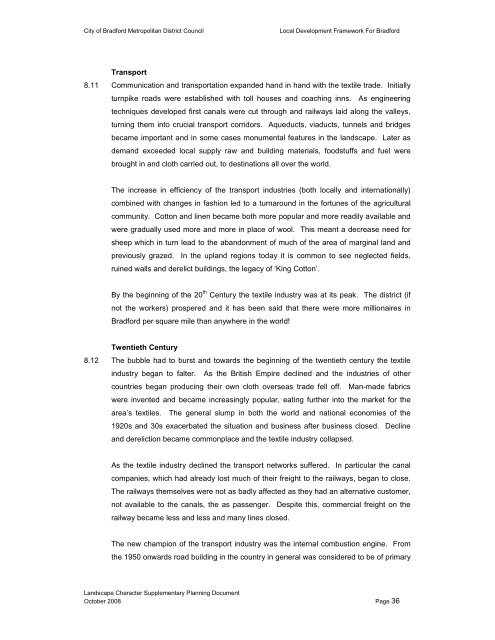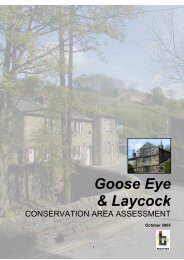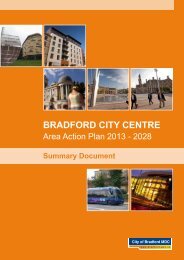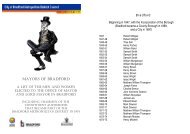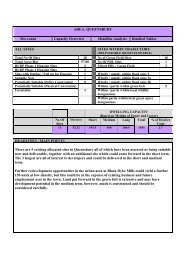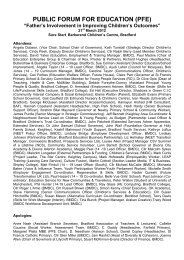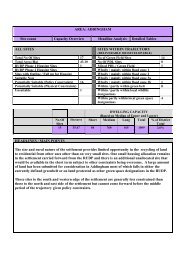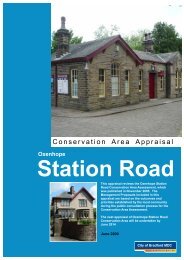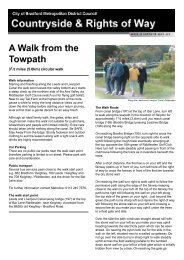Landscape Character Supplementary Planning Document ...
Landscape Character Supplementary Planning Document ...
Landscape Character Supplementary Planning Document ...
Create successful ePaper yourself
Turn your PDF publications into a flip-book with our unique Google optimized e-Paper software.
City of Bradford Metropolitan District CouncilLocal Development Framework For BradfordTransport8.11 Communication and transportation expanded hand in hand with the textile trade. Initiallyturnpike roads were established with toll houses and coaching inns. As engineeringtechniques developed first canals were cut through and railways laid along the valleys,turning them into crucial transport corridors. Aqueducts, viaducts, tunnels and bridgesbecame important and in some cases monumental features in the landscape. Later asdemand exceeded local supply raw and building materials, foodstuffs and fuel werebrought in and cloth carried out, to destinations all over the world.The increase in efficiency of the transport industries (both locally and internationally)combined with changes in fashion led to a turnaround in the fortunes of the agriculturalcommunity. Cotton and linen became both more popular and more readily available andwere gradually used more and more in place of wool. This meant a decrease need forsheep which in turn lead to the abandonment of much of the area of marginal land andpreviously grazed. In the upland regions today it is common to see neglected fields,ruined walls and derelict buildings, the legacy of ‘King Cotton’.By the beginning of the 20 th Century the textile industry was at its peak. The district (ifnot the workers) prospered and it has been said that there were more millionaires inBradford per square mile than anywhere in the world!Twentieth Century8.12 The bubble had to burst and towards the beginning of the twentieth century the textileindustry began to falter. As the British Empire declined and the industries of othercountries began producing their own cloth overseas trade fell off. Man-made fabricswere invented and became increasingly popular, eating further into the market for thearea’s textiles. The general slump in both the world and national economies of the1920s and 30s exacerbated the situation and business after business closed. Declineand dereliction became commonplace and the textile industry collapsed.As the textile industry declined the transport networks suffered. In particular the canalcompanies, which had already lost much of their freight to the railways, began to close.The railways themselves were not as badly affected as they had an alternative customer,not available to the canals, the as passenger. Despite this, commercial freight on therailway became less and less and many lines closed.The new champion of the transport industry was the internal combustion engine. Fromthe 1950 onwards road building in the country in general was considered to be of primary<strong>Landscape</strong> <strong>Character</strong> <strong>Supplementary</strong> <strong>Planning</strong> <strong>Document</strong>October 2008 Page 36


